LESS THAN an hour by train, the serenity that enshrines much of Kyoto’s sense of ethereal bliss quickly evaporates, chased away by the mayhem, noise, lights and effervescence of hedonism at its brightest and gaudiest.
Osaka is a city that is lit up for effect, a sprawling neon display of blinding colours, deafening noise, confusing aromas and perpetual motion a la scenes from Ridley Scott’s Blade Runner. From the moment you exit the train, Osaka beckons. For the young, this is exciting; for those who suffer from any of the following fears — agoraphobia (crowded spaces), claustrophobia (confined spaces) and/or decidophobia (making decisions) the next steps could prove daunting.
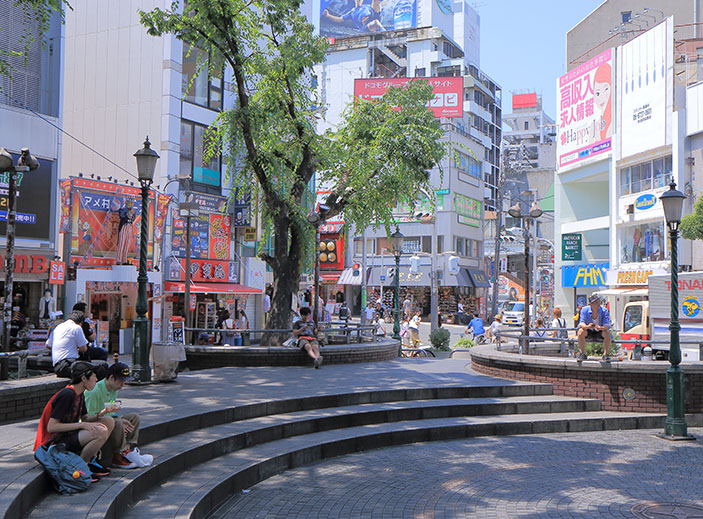
The array of shopping precincts requires some consideration and planning. Once a hotspot for electronics bargains, Den Den Town has seen a shift in its fortunes as bigger electronics superstores have opened up, and today it supports anime and cosplay cultures.
Amerika-Mura has several shops with a focus on youth trends, Doguya Suji is where chefs can get everything they need to fit out their kitchens, Nan Nan Town and Crysta Nagahori sees shopping dive underground in a vast labyrinth of retail space, and Rinku Town is heaven for the budget-conscious outlet shopper. The two anchor shopping precincts are Umeda (also called Kita or “north”) and Namba (aka Minami).
Clearly, Osaka has a pull on the shoppers. Hankyu, Daimaru, Sogo and Kintetsu are all headquartered here. Always packed, and packaged to please, the shopping experience is relentless. So, like a leaf on a stream you are soon swept along on the ride with the tide.
You might also want to read:
Noises In Your Head
Umeda Station is a major transportation hub serving more than two million passengers daily and is obvious for the large Ferris wheel and Hankyu Entertainment Park.
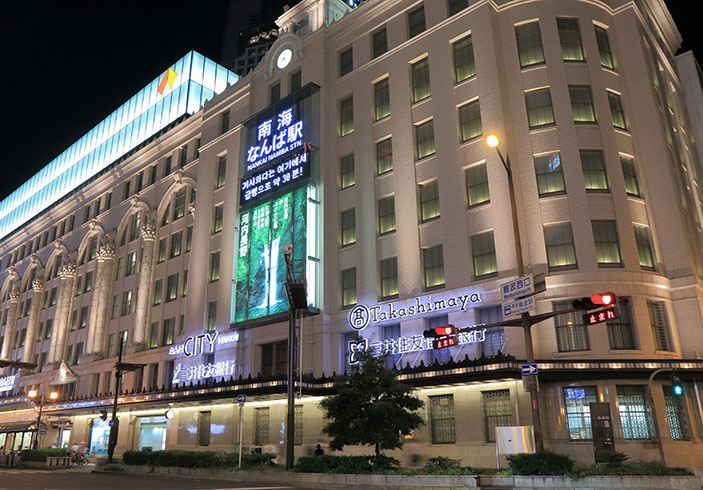
Namba station offers a reasonable selection of food, clothes, essentials, and direct access from the platform to the Swissotel Nankai Osaka with its commanding views of the city. As you make your way through the station, your senses are assaulted by the lights, smells and the sound of shop assistants screaming for attention, their squeaky voices penetrating and reverberating in your cranium with special offers for the day.
As you try to shake clear of the noises in your head and stagger down the escalator, you are soon at the crossroads of voluminous traffic — human and vehicular purposefully surging in several directions — and a confluence of dizzying shopping and dining options. The sprawling Takashimaya departmental store is located here, and there’s the Namba subterranean mall in case you need more options for outlets.
Hit The Streets
Street shopping in Osaka is a mixed bag of offerings. In this pedestrian-friendly (though bicycles roam freely along walkways) city, you have international brands sandwiched between shops selling trinkets, local food and daily necessities. Linking Umeda and Namba is a long covered shopping arcade that concentrates and channels the shopping offerings.
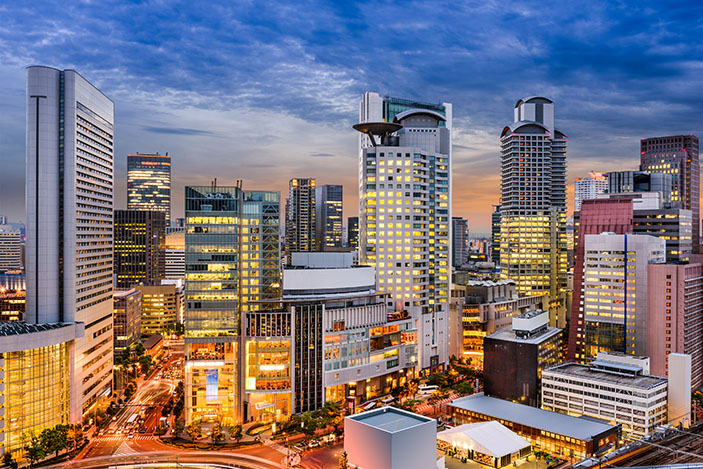
The Shinsaibashi-suji/ Ebisubashi-suji shopping arcade goes back four centuries, having served the Edo period well. Today, it is a dynamic stretch of shopping.
Like moths to the flame, the younger set is drawn to these arcades, lured possibly by the call of the wailing vixens. From knock-kneed giggling girls in school uniforms, to lads with jeans about to fall off snake hips and crowned by spiky hair-dos in various hues of the rainbow, and kimono-clad girls chewing on McDonald’s burgers, slurping a Starbucks or chomping on yakitori sticks, the flow of humanity is almost incessant as it courses along.
Ceremoniously coiffed boys in leather jackets lurk in the shadows, ears to their mobiles, eyes on the crowd, reading faces to decide which ladies would appreciate their company in one of the numerous karaoke establishments.
This orderly current occasionally pauses as a cake shop offers freshly baked produce from the oven, or to look past a door flung open to let out the sound of merrymaking accompanied by the inviting aroma of marinated meat cooking on skewers.
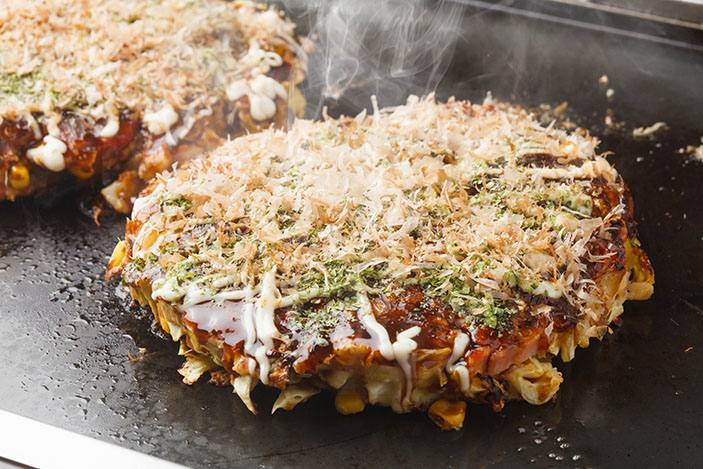
Restaurants abound as Osaka is famed for its cuisine, just as Tokyo is noted for its footwear and Kyoto its clothing. Signature dishes of Osaka include takoyaki (octopus balls), kitsune udon, and okonomiyaki.
The okonomiyaki restaurants along the covered arcades are lively establishments that attract a line for what they serve up — a filling meal of tasty batter fried with your choice of meat and vegetables and brushed with a savoury sauce. It’s a much-needed stopping point as you emerge fired up to continue working your way through the crowded arcade.
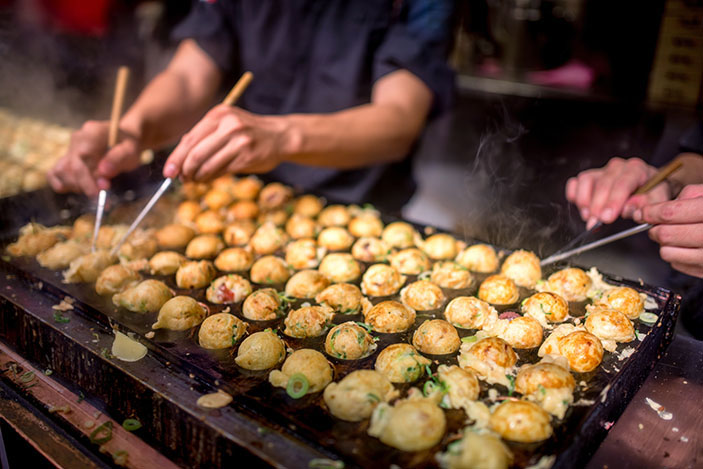
Ringing in the crowds
The omnipresent pachinko machine parlours add to the cacophony of the arcade. You can hear them before you see them — brightly lit and garish rooms filled with rows of machines and with transfixed folks perched on stools mechanically feeding the voracious appetites of machines.
Resembling vertical pinball machines they draw a steady stream of customers and make a tremendous racket, especially if the little balls drop kindly. Not that there’s technically a lot to shout about. The balls are eventually “cashed in” for the usual carnival prizes, or, via a legal loophole, they can also be converted to cash in a nearby exchange centre.
This is one way around the strict gambling ban in Japan, where only government-sanctioned races involving horses, bicycles, motorcycles and motorboats are allowed.
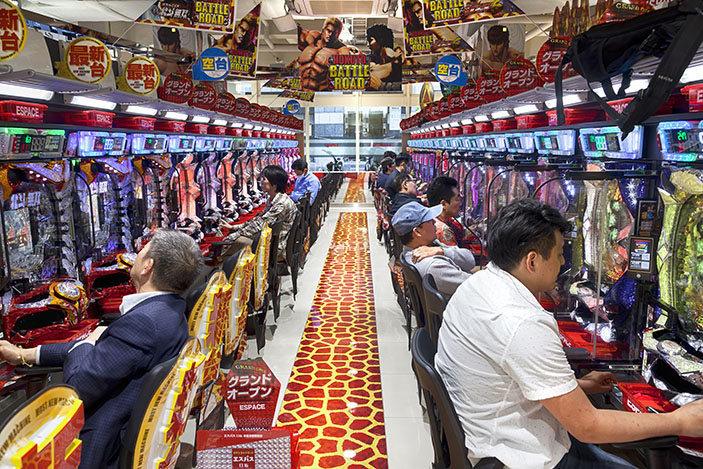
Big Signs
Along the way, you should take a break from the noise and human press by turning off at Dotonbori, where the iconic Kani Doraku crab sign comes to life, lazily flicking an intimidating angry-red pincer at a perpetual audience pooled in appreciative awe, and where the Glico man sticks to his relentless ritual of running on a treadmill that seems to power the lightshow around him.
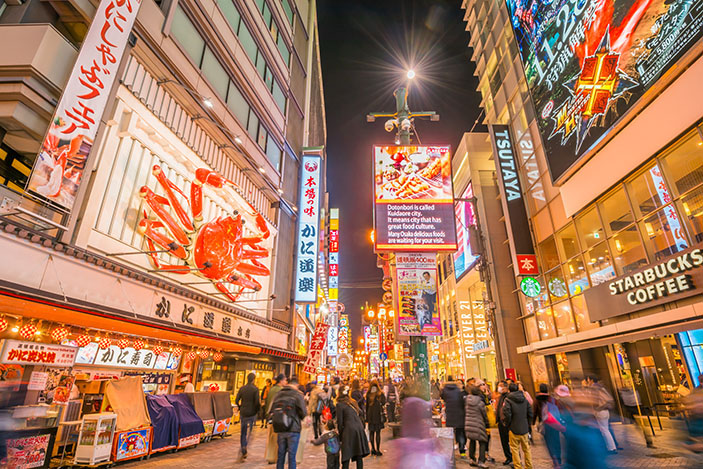
Or you could step away from the crowds and dart into one of the numerous departmental stores offering a range of products for those preferring to shop upwards rather than along long spotless streets. Most of the store is devoted to shopping, though there is likely to be a floor for dining, or a café that has a slow queue of weary walkers snaking out the door like a python about to feast.
If you are not into queues, you could try shopping, but here, as in most of Japan, the larger-sized are disadvantaged. It’s hard to find an obese Japanese — other than the sumo wrestlers who have probably been feasting too well off their controversial ill-gotten gains from illegal betting — and it’s hard to find clothes that are larger than a size L or shoes beyond size 10 (for men).
So, it’s likely you’ll be back along the covered arcades, drawn by the lights and sounds to be swept along into the dizzying vortex of consumerism.
This article was first published in STORM in 2011.
Main Image: Glico man, Dotonbori / SIHASAKPRACHUM / Shutterstock.com



















